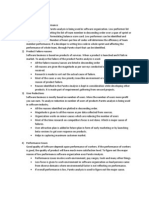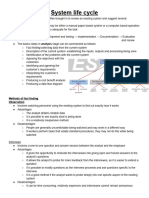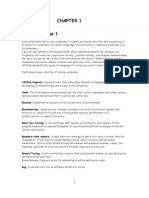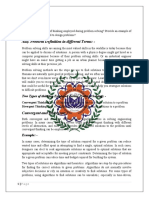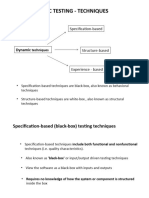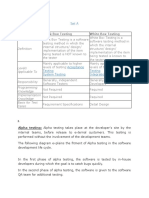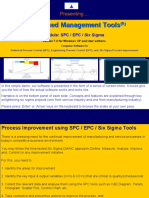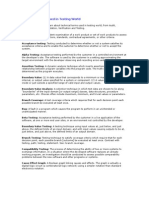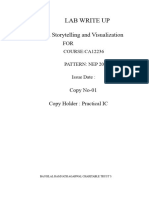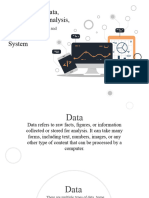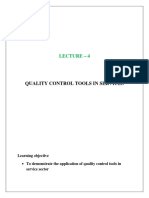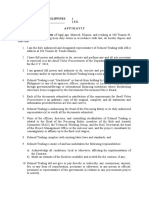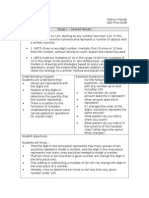Question: Explain at least 5 usage scenarios for each in a software organization.
Answer:
Pareto Analysis
• To identify the vital few factors for high turnover rate of employees by getting data of
different reasons of employee turnover.
• To identify the vital few factors that result in a project delay by getting data of different
reasons of project delay.
• To identify the vital few factors that cost the company most money by getting data of
different factors that cost the company.
• To identify the vital few factors that result in low quality of product by getting data of
different reasons that result in low quality.
• To identify the vital few factors responsible for low productivity by getting data of
different factors that result in low productivity.
Histogram
• To identify how much coding standards have been followed by the developers by getting
data of source code review of different developers.
• To identify the frequency of occurrence of bugs in different phases of a project after
performing the testing of different phases.
• To identify the impact of different bugs/errors on the project cost by getting data of
different bugs found in testing and the cost required to fix those bugs.
• To identify the impact of different bugs/errors on the project schedule by getting data of
different bugs found in testing and the time required to fix those bugs.
• To identify the impact of requirements change on the project cost by getting data of
requirements that will be affected by this change after reviewing the Traceability Matrix
and the cost required to implement those changes.
• To identify the impact of different requirements change on the project schedule by getting
data of requirements that will be affected by this change after reviewing the Traceability
Matrix and the time required to implement those changes.
�• To identify the variation in the output of a test case against different inputs after
performing the testing.
�Check Sheet
• To check the daily attendance of a team in a certain time frame by getting data from the
attendance register.
• To check the number of bugs reported daily by different Test Engineers in a time period
after performing the testing.
• To check the tasks are assigned regularly to a team in a time frame by getting data from
project status review meetings, emails or from project plan execution.
• To analyze the performance of a team by checking the number of tasks completed daily
by getting data from emails, project status review meetings and from executed project
plan.
• To check the status of Local Area Network (LAN) unavailability in a time frames that for
how many hours the LAN was unavailable in a week or month by getting data from
network status form which is filled by the Network Administrator whenever there is any
problem occur in the network.
• To ensure that every one Check-In the source code daily before leaving the office.
Configuration Manager can provide the data for maintaining the checklist.
Control Charts
• To analyze the performance of a team in a certain time frame by getting data of their tasks
completed. To identify that is there any one whose performance is below the specified
limit? To take corrective action against that person.
• To analyze the cost variation in different projects by getting data of cost of different
projects running in the company. To take corrective action on the project that exceeds the
specified cost limit.
• To analyze the number of bugs reported in different projects by the testers in different
times. To take corrective action against the project that produced bugs above the specified
limit.
�• To analyze the number of issues resolved by a team in different projects in different time
period. To take corrective action against the team that has resolved the number of issues
below the specified limit.
• To analyze the total revenue of last 5 or 10 years. To get details of company worth and
trend of company revenue for that period. To find that in which year the revenue of the
company was below the specified limit.
�Scatter Diagram
• To study/analyze the trend of number of hours spent by a developer in office and number
of lines of source code produced.
• To study/analyze the trend of number of lines of code produced and number of bugs
reported in that code.
• To analyze and predict the effect on project cost by the number of days a project delay.
• To analyze the number of bugs reported and the estimated time (number of days) required
fixing those bugs.
• To study the number of requirements gathered and the number of test cases required
satisfying those requirements.
Cause and Effect Diagram:
• To identify the causes of high turnover rate of Software Engineers by getting data of
different causes and sub-causes of Engineers turnover.
• To identify the causes of low quality of product by getting data of major causes and sub-
causes that result in low quality of a product.
• To identify the causes of low productivity by finding the causes and sub-causes that result
in low productivity.
• To identify the causes of schedule slippage by finding the major causes and sub-causes
that result in project delay.
• To identify the causes of cost slippage by finding the root causes and sub-causes that
result in exceed the project cost.
• To identify the causes of coding defects by finding the causes and sub-causes of that
coding standards are not followed by the developers.
